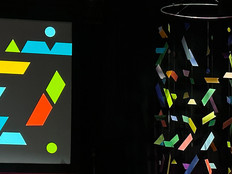Why CIOs, IT and Faculty Need to Find Common Ground on Technology
CIOs are paid to guarantee five nines of uptime for mission-critical systems on campus. All campus constituencies benefit from such stability. After all, who wants important emails to go undelivered, learning management systems to delete students' homework, or registration systems to fail?
But as the best intentions for providing highly reliable IT services are amplified by higher education's broader aversion to change, many kinds of teaching innovation become all but impossible on campus.
By definition, innovation means doing something new. That might mean using formally supported IT systems in novel or unintended ways, but more likely it means running unsupported services, whose functions either parallel officially sanctioned systems or are currently unavailable on campus. A college might decide to run its own LMS, for example, and eschew the formally approved campuswide offering. Such "rogue" systems often are the source of political turmoil between central IT and the departments or colleges that run them. When offered by individual faculty who lack the political clout of a department or college, those rogue services are frequently terminated by central IT in the name of reliability, support for students, safety and myriad other reasonable-sounding explanations.
CIOs and IT often complain about academics who can't understand that running rogue services is a bad idea. But they are themselves unable to understand why academics feel that such services are absolutely critical to the university's future.
Encourage Discovery and Innovation
Among all the exciting (and occasionally revenue-generating) inventions and discoveries made by university researchers, the most directly applicable to their institutions are those related to teaching and learning — which are, after all, an institution's first and foremost reason for existing. But what kind of experiments with using new educational technology can be conducted when every faculty member is required to use the same LMS, with its specific affordances that gently yet firmly nudge toward a limited range of pedagogies? What kind of experiments can be conducted when the idea of "student response" has been impoverished to fit inside a remote control with five buttons, whose use is encouraged campuswide?
Higher education CIOs who report having inadequate resources to manage IT effectively
SOURCE: "Higher Education Technology Survey" (Consero Group, June 2013)
There must be space on campus for exploring, playing and experimenting with new technologies so that we can gain a greater understanding of their potential impacts on teaching and learning. I don't mean a physical space, though an area stocked with gadgets and software could be potentially inspiring.
And I certainly don't mean a place where faculty can go to receive assistance in conforming to the campus IT orthodoxy — that kind of space is valuable for supporting faculty using the LMS, but not for enabling innovation in the context of teaching and learning.
There must be policy space — permissions and elbow room with regard to the use of new technologies in classes — in which the scholarship of technology-mediated teaching and learning can occur in the open. Without the opportunity to experiment freely, many faculty will avoid such research altogether. Others will spend more time and effort evading detection than on the scholarship itself. Driving innovation underground will not help our institutions meet the many challenges they face. Helping to accelerate it may.







